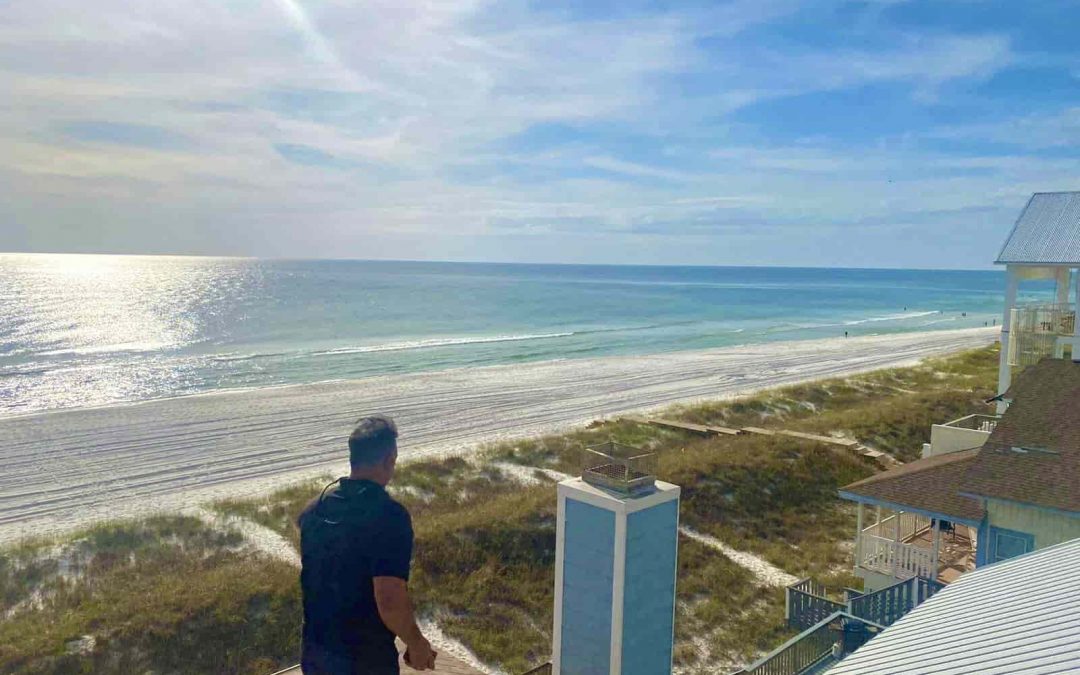The byproduct of enjoying your fireplace is creosote buildup. Creosote is one of the major causes of chimney fires along with soot. The buildup of these materials can restrict the airflow of the chimney and cause damage. A chimney inspection allows the tech to ensure that everything looks good. During this process, our technicians will give you a report of how everything looks and any recommendations as to what needs to be repaired. The inspections consist of both the exterior and interior of the chimney and fireplace.
Exterior Inspection
- We will check the height of the chimney to make sure that it is the minimum proper distance from roof penetration. This is necessary for a proper draft.
- The chimney cap or spark arrestor will be inspected if one is present. Chimney caps are vital to keeping out the elements and small animals that would otherwise enter your chimney.
- We check the crown for cracks and to make sure it’s shedding water correctly.
- The brickwork and mortar are inspected for cracks and damages. Cracks in the mortar are a common cause of water leaks.
- We will inspect the flashing that seals the chimney to the roof.
- The flue liner is checked for cracks, stability, and support.
- Your chimney will be checked for moisture resistance.
Interior Inspections
In addition to inspecting the exterior of the chimney, we also do a thorough inspection of the exterior.
- The smoke chamber and smoke shelf are first on our list of things to check inside the fireplace. Prefab fireplaces may or may not have a smoke chamber.
- Next is the damper. In a chimney flue, a damper seals the flue to keep the weather and animals out and warm or cool air in. Usually, this is done in the summer, but also sometimes in the winter between uses. In some cases, the damper may also be partly closed to help control the rate of combustion. The damper is accessible only by reaching up into the fireplace by hand or with a wood poker, or sometimes by a lever or knob that sticks down or out. The technician will check to see if your damper is working properly.
- We also inspect the firebox and grate, checking for rust or any popped rivets in the firebox and to make sure the grate is in serviceable condition.
- If your fireplace has a spark screen or glass doors, we check to make sure they are properly installed and functioning as they should.
- Refractories – these are the floor, back, and sides of your fireplace. The materials for refractories include; masonry units, ceramics, and metal plates.
Should I inspect my own chimney?
If you are asking yourself whether a DIY inspection is a good idea or not, then you are in the right place. The short answer is you could inspect your own chimney, but the more important question to ask yourself is: Should I inspect my own chimney?
While some chimney maintenance is possible for the DIYer, a complete chimney inspection and cleaning should be performed at least once a year by a chimney technician.
There are many safety concerns you need to consider before DIYing your chimney inspection.
- Protect your home with floor covering tarps.
- Use proper equipment.
- Document the chimney’s condition.
- You can be exposed to hazardous materials like soot, creosote, and harmful fumes.
- It can be extremely dangerous climbing on a roof without the appropriate fall protection, ladders, and equipment.
Though you can inspect your own chimney, it is best to leave it to the professionals. Our technicians are experts and have years of experience in this field.
Does Homeowners Insurance Cover Chimney Repairs?
While all homeowners insurance varies, it should cover chimney repairs if a covered peril caused the damage. Your chimney is considered part of your home’s structure, so its coverage mirrors your dwelling’s coverage. It does not cover maintenance or other uncovered perils. It is best to call your insurance company to know what they will cover based on your insurance plan.
Do Cleaning Logs Really Work?
Many homeowners wonder if the chimney sweep logs or creosote sweeping logs really work to clean out fireplace flues and get rid of creosote residue so that the fireplaces are safe to use. The short answer is no, they don’t work. At least not well enough to completely clean out the flue the way it should be cleaned. The best way to get a thorough clean is to contact your local chimney technicians at Sootmaster.

